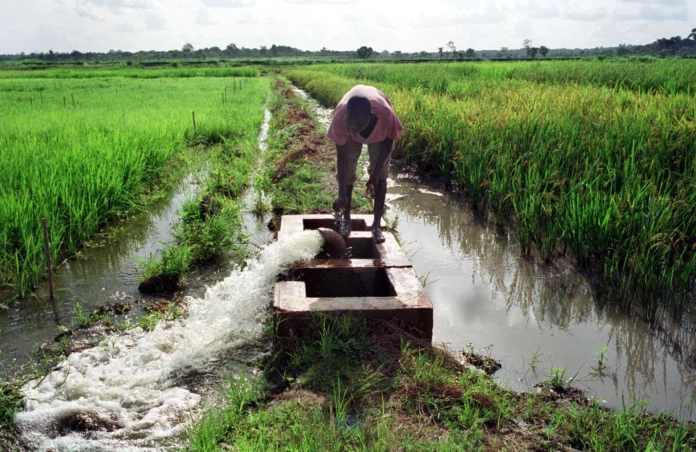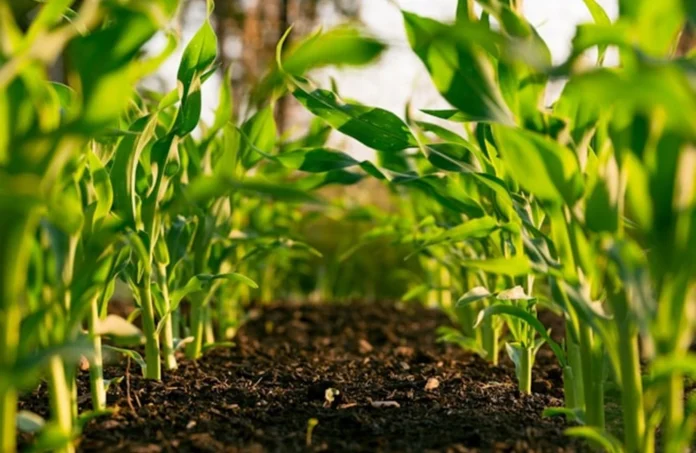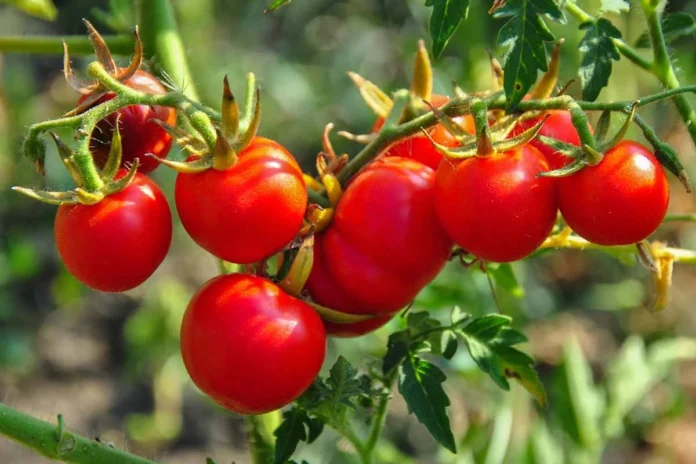Arabfields, Dalia Zineb — In an era where climate change demands urgent action from every sector of society, the agricultural industries of New Zealand and Ireland stand out as strikingly parallel case studies. Both nations, blessed with vast grasslands and a strong tradition of livestock farming, face the dual challenge of sustaining vital export-driven economies while grappling with ambitious emissions reduction targets. As global pressures mount to curb greenhouse gases, recent policy shifts in New Zealand have sparked debate across the Tasman Sea and beyond. Could Ireland, facing similar dilemmas, benefit from adopting a more “pragmatic” stance? This article explores the shared characteristics of these two agricultural powerhouses, the hurdles they confront in reducing emissions, the societal trade-offs involved, and the potential implications of New Zealand’s latest legislative pivot. Drawing on recent data from environmental agencies, government reports, and expert analyses, it examines whether such pragmatism represents a viable path forward or a risky retreat from global climate commitments.
New Zealand and Ireland share more than just their island geography and Celtic cultural echoes; their agricultural sectors are remarkably alike. In both countries, grassland dominates land use, forming the backbone of economies heavily reliant on ruminant livestock, primarily cattle and sheep. Dairy products, beef, and lamb are the cornerstone outputs, produced efficiently on lush pastures that allow for low-input, grass-based systems. With relatively sparse populations, New Zealand at around 5.2 million and Ireland at approximately 5.1 million, compared to their expansive rural landscapes, these nations export about 90% of their agricultural produce. This export orientation not only bolsters national GDPs but also positions them as key players in global food supply chains, contributing significantly to international trade in high-quality, grass-fed proteins.
The environmental footprint of this model, however, is significant. Ruminants like cows and sheep convert grass into meat and milk through enteric fermentation, a process that releases methane, a potent greenhouse gas with a global warming potential 28 times that of carbon dioxide over a 100-year period. Consequently, agriculture accounts for a disproportionate share of national emissions: 37% in Ireland and nearly 50% in New Zealand. This high percentage is exacerbated by the relative absence of heavy industry in both countries, which shifts the emissions burden squarely onto farming. According to the latest data from Ireland’s Environmental Protection Agency (EPA), released in July 2025, agricultural emissions dipped by just 1.7% in 2024 compared to 2023, and 4.6% from 2018 levels. In New Zealand, biogenic methane from livestock remains the dominant challenge, underscoring the need for targeted strategies that balance environmental goals with economic viability.
These similarities extend beyond statistics. Both nations pride themselves on sustainable, pasture-based farming that minimizes reliance on imported feeds and aligns with consumer demands for “natural” products. For instance, Ireland’s dairy sector has long emphasized its grass-fed credentials, which appeal to markets valuing animal welfare and lower environmental impacts from feed production. Similarly, New Zealand’s “clean-green” branding has been a cornerstone of its export strategy, promoting low-intensity farming as a selling point. Yet, this very system complicates efforts to slash emissions without compromising output. As climate commitments tighten under international frameworks like the Paris Agreement, the parallels invite comparison, and perhaps emulation. Experts note that both countries face unique challenges due to their reliance on agricultural exports, where emissions are attributed at the point of production rather than consumption, potentially disadvantaging them in global accounting systems.
Ireland’s agricultural sector is acutely aware of its obligations under the national Climate Action Plan 2025, approved by the government in April 2025, which mandates a 25% reduction in farm emissions by 2030 relative to 2018 levels. This target forms part of the broader European Union effort-sharing regulation, aiming for a 51% cut in overall emissions by the decade’s end. However, the EPA’s May 2025 projections paint a sobering picture: even with current measures, Ireland is on track for only a 22% reduction across all sectors, falling well short of legal requirements. The latest EPA data from July 2025 confirms a modest 2% overall drop in greenhouse gas emissions for 2024, with agriculture contributing a 1.7% reduction, driven primarily by lower fertilizer use and livestock numbers. Despite this, emissions in 2024 were only 12% lower than 2018 levels, highlighting the gap to the 2030 goal.
Efforts to curb emissions have been underway for years, incorporating innovations like methane-reducing feed additives, precision fertilizer application, and improved slurry management. These technologies promise incremental gains, potentially up to 10-15% reductions, but experts agree they alone won’t suffice. The stark reality, as outlined in multiple government reports, is that meeting the 2030 goal will likely require a contraction in livestock numbers. In the dairy sector, which has expanded dramatically since the abolition of EU milk quotas in 2015, production could theoretically be maintained or even grown through genetic enhancements and more intensive feeding regimes. High-merit breeds, for instance, can yield more milk per cow, reducing the herd size needed for equivalent output. Teagasc, Ireland’s agriculture and food development authority, has highlighted “green shoots of progress” in farmer-led initiatives, such as adopting these practices, which contributed to the 1.7% drop in 2024.
Yet, this approach clashes with Ireland’s grass-based ethos, which emphasizes animal welfare, biodiversity, and lower costs. Intensive systems often demand more concentrates, increasing reliance on imports and potentially elevating nitrous oxide emissions from fertilizers. In beef production, the challenges are even more pronounced. Genetic improvements have limits, and with fewer animals comes reduced output, a trend already evident in 2025 despite record-high beef prices. Typically, such market signals would spur expansion, but structural headwinds are at play: an aging farmer demographic (with the average age now over 58), decades of marginal incomes, incentives for organic conversion, and uncertainties surrounding the EU’s Common Agricultural Policy (CAP) post-2027 reforms. These factors have dampened enthusiasm for suckler beef systems, leading to a projected 5-10% decline in national herd sizes by year’s end.
Compounding these issues are collaborative initiatives between Ireland and New Zealand, such as the €5.2 million joint research fund announced in January 2025. This partnership, part of the Ireland-New Zealand Joint Research Initiative, focuses on developing tools for measuring and mitigating emissions, including advanced sensors for methane monitoring and breeding programs for low-emission livestock. Three specific projects were funded to address common challenges, such as improving emissions accounting and testing new technologies in grass-based systems. While promising, these efforts highlight the shared urgency: without bolder action, both nations risk missing their climate marks. The Irish Farmers’ Association (IFA) has called for significant investment to support these transitions, noting that while progress is being made, the scale of change required demands more resources.
Few today deny the reality of climate change or humanity’s role in accelerating it. The Intergovernmental Panel on Climate Change (IPCC) reports leave little room for doubt, emphasizing the need for deep, systemic transformations. Yet, the crux lies in implementation, who bears the burden, and how equitably? In Ireland, agriculture emerges as a convenient focal point. With fewer than 125,000 farmers amid a population of five million, targeting this group for steep reductions diverts scrutiny from other high-emission sectors like transport (responsible for 18% of emissions) and energy-intensive data centers, which have proliferated thanks to Ireland’s role as a tech hub.
This disparity raises equity concerns. Why should rural communities shoulder disproportionate cuts while urban dwellers enjoy unrestricted air travel and smartphone usage? The EPA’s projections warn that without aggressive interventions, agricultural emissions might fall by up to 16% by 2030, still insufficient against the sector’s cap. Meanwhile, the economic contributions of farming are often undervalued. Beyond direct output (valued at €15 billion annually), the agri-food industry supports over 170,000 jobs and generates vital export revenues. Yet, corporate taxes from multinationals dwarf these figures, skewing policy priorities.
Another layer of inequity stems from emissions accounting. Farm produce for export is charged at the point of production, penalizing exporters like Ireland and New Zealand. In contrast, fossil fuel emissions are tallied at the point of use, allowing importers to offload responsibility. This framework, enshrined in UN protocols, may not be fair, but it defines the playing field. Critics argue it disadvantages food-producing nations, potentially undermining global food security amid rising populations. Leading climate scientists have accused both countries of using “accounting tricks” to justify maintaining high livestock numbers, such as differentiating methane’s short-lived impact from long-lived gases like CO2. This approach, while scientifically grounded in methane’s 12-year atmospheric lifespan, risks underplaying its immediate warming effects.
Enter New Zealand’s recent legislative overhaul, announced in September 2025, which has ignited international controversy. The government, under pressure from farming lobbies, redefined agricultural targets from absolute emissions reductions to a “no additional warming” principle. In practice, this means cutting biogenic methane by 14-24% from 2017 levels by 2050, a far cry from the previous administration’s 24-47% ambition. Additionally, agriculture was exempted from the New Zealand Emissions Trading Scheme (NZ ETS) in 2024, and proposals for methane taxes were shelved. The government also introduced limits on farm-to-forest conversions to prevent excessive land use changes that could offset emissions elsewhere.
Farmer representatives and processors have hailed this as a “sensible reset,” arguing it safeguards production without stifling innovation. Groups like Federated Farmers emphasize that methane’s short-lived nature warrants differentiated treatment from long-lived gases like CO2. Environmental advocates, however, decry it as a “major backslide,” warning of reputational damage and trade risks. Organizations such as Greenpeace New Zealand have labeled the move “short-sighted,” potentially jeopardizing the country’s clean-green image. The Climate Action Tracker has noted that these changes represent significant backwards steps, leaving agricultural methane emissions, over 40% of total emissions, largely unaddressed.
The European Union, a key trading partner via a free trade agreement ratified in 2024, negotiated on the basis of the prior targets and has expressed dismay. Provisions in the deal allow for investigations into non-compliance with sustainability clauses, raising the specter of disputes. Analysts speculate this could strain relations, especially as the EU pushes its Green Deal agenda.
Irish farmers and agri-processors are watching closely, pondering: If New Zealand can pivot to pragmatism without collapsing its sector, why can’t we? The Climate Change Advisory Council’s July 2025 report underscores Ireland’s lag, urging accelerated action to avoid EU penalties, which could include fines or withheld funds. Adopting a similar “no additional warming” metric might ease pressures on herds, preserving rural livelihoods and exports. It could also foster deeper bilateral ties, building on existing research collaborations to advocate for fairer global accounting rules.
Yet, risks abound. Ireland’s EU membership binds it to collective targets, and deviation could invite legal challenges or isolation. Environmental groups, including Friends of the Earth Ireland, argue that softening goals betrays future generations, especially as extreme weather events, like the floods of summer 2025, intensify. Climate experts have explicitly urged Ireland not to follow New Zealand’s lead in weakening methane targets, warning that it could undermine broader EU efforts. A balanced approach might involve lobbying Brussels for methane-specific metrics, as New Zealand has done domestically.
Ultimately, this debate pits idealism against realism. Can agriculture adapt without undue sacrifice? As both nations navigate these waters, their choices will shape not just their futures but the global discourse on sustainable farming. The path forward demands nuance: harnessing technology, reforming policies, and ensuring equitable burdens. For Ireland, New Zealand’s experiment offers a tantalizing blueprint, but one that must be weighed against European commitments and planetary imperatives. The stakes are high; the time for tough decisions is now. With ongoing joint research and international scrutiny, the coming years will test whether pragmatism can coexist with ambition in the fight against climate change.












